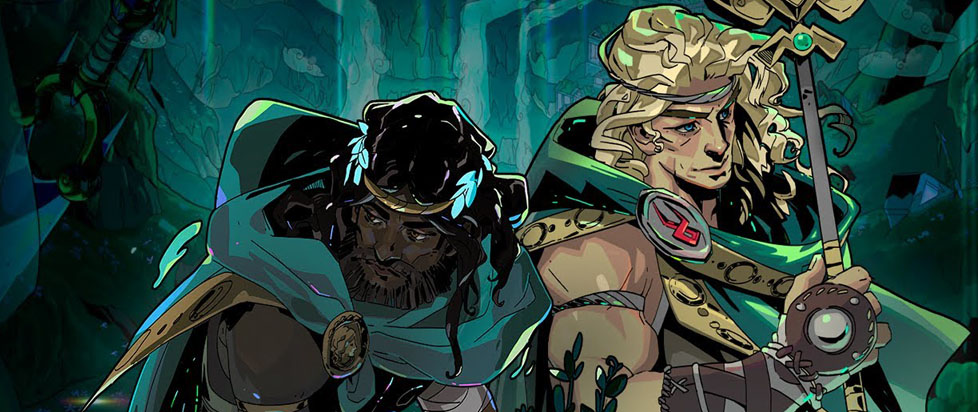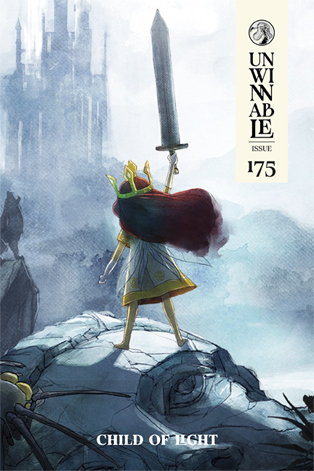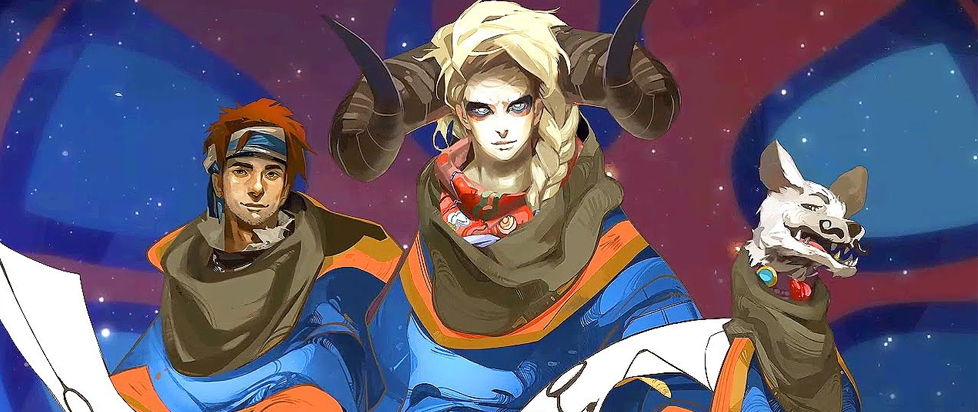
Supergiant’s Scrappier, Better Underworld

This column is a reprint from Unwinnable Monthly #175. If you like what you see, grab the magazine for less than ten dollars, or subscribe and get all future magazines for half price.
———
What does digital grass feel like?
———
Hades and Hades II both take place in mythological underworlds. In the original, Zagreus flees the House of Hades, fights through Tartarus, Asphodel, Elysium and the Temple of Styx, all based on the underworld of Greek mythology filtered through thousands of years of history and the game design choices of a 2018 roguelike. Hades II brings us the crossroads, a less well-defined area that seems to sit somewhere between the world we know and the underworld of its predecessor, and a space that will presumably grow as the game enters and eventually escapes from early access.
But before either of these, there was another underworld escape attempt. Supergiant’s previous release, 2017’s Pyre, follows a group known as the Nightwings who, like Zagreus, are trapped in a strange but beautiful purgatory, this time known as the Downside. And, like Zagreus, they’re absolutely determined to make it back up top.
But unlike the spaces of the Hades games, the Downside is not an infinite labyrinth of rooms, filled only with enemies (and the occasional Charon store). The Downside is a world. Escaping it is a journey that takes the Nightwings through a variety of jewel-toned, hazily lit environments, each with their own moods. It necessitates the wagon, a home base that feels simultaneously comforting and crowded. And it gives all the characters a sense of grounding, a place in the world that lends them important narrative weight.
The characters of Hades and now Hades II are beloved, albeit perhaps shallowly. But their depth as characters feels proportional to how placed they are in the narrative. The gods of Olympus, who show up only briefly to offer a line of dialogue and a helpful boon for Zagreus’s current escape attempt, have no roots.

Those who are stuck in the House of Hades can get a little more depth from Zagreus’s repeated interactions, as well as their interaction with the space around them. Hypnos dozing by the Pool of Styx automatically says something different about him than seeing Hades in his great throne, even with no understanding of their characters, myths or development in the narrative.
But it’s those who appear in multiple places that really begin to shine. Yes, Thanatos can be found in the House, but it’s the fact he’ll show up outside to help you that makes him fascinating. And vice versa for Mel, who will try to kill you on the runs only to be friendly back home. And then there are characters who are, for a long time, much more trapped than Zagreus. Take Achilles, unable to visit Patroclus in Elysium until Zagreus helps him out, late in the game. When you first run into them together, it’s a moment of victory in a game that’s otherwise mostly about failure.
On the other hand, Patroclus’ glade has no indication that he’s tried to make it a home, giving the impression that he’s been drifting without Achilles. It’s easy to compare these to how the carefully kept spaces of Eurydice and Persephone tell us the stories of two women trying to make the best of a place that they don’t really want to be; knickknacks built up over the years, a focus on cooking and farming as a personal hobby as well as a necessity – both for physical needs and their mental health.
These are the spaces that give solidity to Hades, but they’re few and far between in actual runs, where the rooms might shift constantly but almost all remain battle arenas and little else. In Pyre, every new screen is a place with a history, and they lend the same weight to the people who appear there.

For example, the Vagabond, a character who you can name anything that rhymes with “Gray,” attaches herself to your wagon in the desert. She’s obsessed with the Scribes, Pyre’s religious figures, and her desert wanderings are reminiscent of medieval saint’s tales – plus they explain her scattered, dream-like approach to life. Not long after she joins the Nightwings, she insists on defending the group from attack, presumably familiar with protecting herself in the harsh desert environment. Immediately following that, the drive imp Ti’zo appears, who seems mysteriously connected to the wagon, as well as the Rites themselves, hinting at yet more links.
After picking up the Vagabond and Ti’zo, you head for a place known as the Cairn of Ha’ub. There, a giant skeleton emerges from the ground, and before you can react, the best song in the game cuts in out of nowhere. These are the Dissidents, a pack of dog-like Curs who are fast, ruthless scavengers. And when your friend Rukey admits later that he’s in debt to them, it makes all the more sense, because we already know who these people are. They live under the ribcage of a long dead thing.
All of these examples come one after the other; the Downside never pauses and has no filler. Every environment has something to say, and someone to say it. So much of Hades, and by extension Hades II, can be seen in the primordial soup of Pyre. But Pyre also stands alone as a fantastic game about resourcefulness, determination, and teamwork. And its spaces contribute to that in a way that the roguelike, battle arena necessities of the Hades duo can’t replicate.
———
Jay Castello is a freelance writer covering games and internet culture. If they’re not down a research rabbit hole you’ll probably find them taking bad photographs in the woods.




